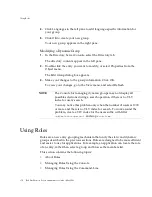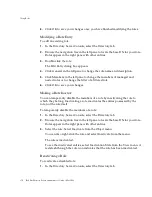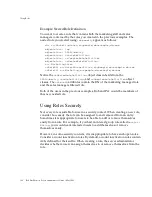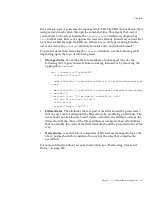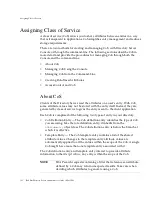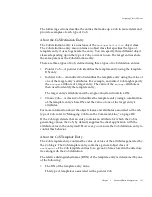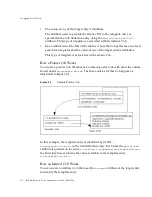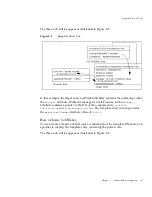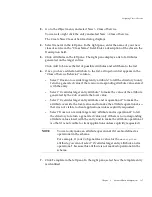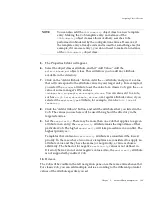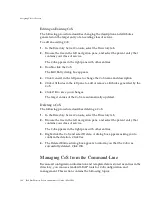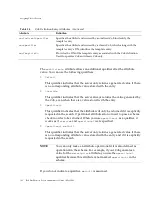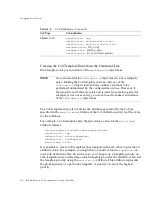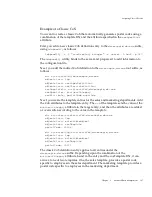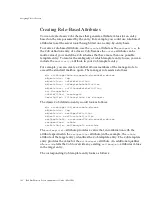
Assigning Class of Service
Chapter 5
Advanced Entry Management
183
The following sections describe the entries that make up a CoS in more detail and
provide examples of each type of CoS.
About the CoS Definition Entry
The CoS definition entry is an instance of the
cosSuperDefinition
object class.
The CoS definition entry also contains an object class that specifies the type of
template entry it uses to generate the entry. You can specify three different object
classes depending upon the type of CoS you want to use. The target entries share
the same parent as the CoS definition entry.
There are three types of CoS, defined using three types of CoS definition entries:
• Pointer CoS — A pointer CoS identifies the template entry using the template
DN only.
• Indirect CoS — An indirect CoS identifies the template entry using the value of
one of the target entry’s attributes. For example, an indirect CoS might specify
the
manager
attribute of a target entry. The value of the
manager
attribute is
then used to identify the template entry.
The target entry’s attribute must be single-valued and contain a DN.
• Classic CoS — A classic CoS identifies the template entry using a combination
of the template entry’s base DN and the value of one of the target entry’s
attributes.
For more information about the object classes and attributes associated with each
type of CoS, refer to “Managing CoS from the Command-Line,” on page 190.
If the CoS logic detects that an entry contains an attribute for which the CoS is
generating values, the CoS, by default
,
supplies the client application with the
attribute value in the entry itself. However, you can use the CoS definition entry to
control this behavior.
About the CoS Template Entry
The CoS template entry contains the value or values of the attributes generated by
the CoS logic. The CoS template entry contains a general object class of
cosTemplate
. The CoS template entries for a given CoS are stored in the directory
tree along with the CoS definition.
The relative distinguished name (RDN) of the template entry is determined by one
of the following:
• The DN of the template entry alone.
This type of template is associated with a pointer CoS.
Summary of Contents for DIRECTORY SERVER 7.1
Page 1: ...Administrator s Guide Red Hat Directory Server Version7 1 May 2005 Updated February 2009 ...
Page 20: ...20 Red Hat Directory Server Administrator s Guide May 2005 Glossary 619 Index 635 ...
Page 22: ...22 Red Hat Directory Server Administrator s Guide May 2005 ...
Page 26: ...26 Red Hat Directory Server Administrator s Guide May 2005 ...
Page 78: ...Maintaining Referential Integrity 78 Red Hat Directory Server Administrator s Guide May 2005 ...
Page 200: ...Assigning Class of Service 200 Red Hat Directory Server Administrator s Guide May 2005 ...
Page 488: ...488 Red Hat Directory Server Administrator s Guide May 2005 ...
Page 528: ...PTA Plug in Syntax Examples 528 Red Hat Directory Server Administrator s Guide May 2005 ...
Page 572: ...572 Red Hat Directory Server Administrator s Guide May 2005 ...
Page 612: ...Examples of LDAP URLs 612 Red Hat Directory Server Administrator s Guide May 2005 ...
Page 634: ...634 Red Hat Directory Server Administrator s Guide May 2005 ...


